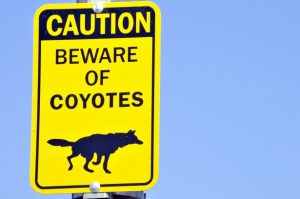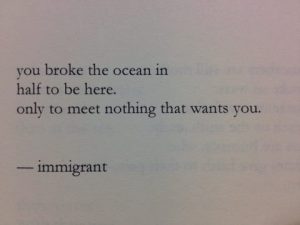Write a blog that hyper-links your research on the characters in GGRW according to the pages assigned to you. Be sure to make use of Jane Flick’s reference guide on your reading list.
I chose pages 162-165, 191-193, and 320-322 to research the influences of Western media and pop culture icons like John Wayne on characters such as Eli Stands Alone, Lionel Red Dog, and George, and the significance of the attempts to subvert the roles of the hero through John Wayne’s on-screen death.
Mystic Warrior / John Wayne
An important symbol in GGRW is John Wayne, who most resembles the Mysterious Warrior that Bill Bursum roots for, as he “[clutches] his hands in his lap as if he was praying” (188). It is in this non-Native text that people like Bill Bursum, who only represents the interest of non-Native claims and the hostility of such as well (Flick, 21) treat the Western myth as the only true mythology to believe in, just as Christianity can be interpreted as a usurper of all other religions. Moreover, it is in the background of the Monument Valley where camera scenes of Western victory are played over and over again, where either Indians are regarded as savages or really, the antagonists of heroic cowboys. One good example that also refers to John Wayne is Stagecoach.
As a character reference, John Wayne was an actor who played in multiple roles of films that portray him as the individualistic hero. In pages 320-322, we see the dynamics of this role being reversed, or rather, as an attempt by the 4 Indians to fix the ‘mistake’ of representation, which is further tied to one of Lionel’s biggest past mistake in choosing John Wayne as his childhood idol (241). This decision probably led to further issues of identity, in the general aspect of meeting other people’s expectations through erasure or pretending, at an expense of his own culture or family tradition. Western media like John Wayne furthermore exploits the cultural narratives of First Nations people by imposing assumptions that simplify what it means to be “authentic”. King mentions in The Truth about Stories that for Natives, “this disjunction between reality and imagination is akin to life and death. For to be seen as ‘real,’ for people to ‘imagine’ us as Indians, we must be ‘authentic’” (54). Thus, Western media creates this mythical model of an authentic Indian, but to be seen as authentic they must “either conform to those external Stories or to have their Indian-ness erased entirely” (Bechtel, 212).
Eli Stands Alone
“Trembling and alone, the woman, whose name was Annabelle, huddled on the ground waiting for death. But instead of being scalped as she had supposed, the Mysterious Warrior picked her up, put her on his horse beside him, and galloped away.
Eli got up and put a pot of water on. The light was beginning to fade. It was junk and he knew it, but he liked Westerns. It was like . . . eating potato chips.” (King, 162-163)
In context of the pages I chose, Eli’s narrative resembles that of a failed romance with Karen. Karen’s projections of him being her Mystic Warrior (King, 164) as well as her overall perceptions of Native American lifestyle is heavily influenced by Western media. When she finally visits Eli’s family and camp (recall that this is Eli remembering all these past details while he is reading a junkie romance), she says: “That’s beautiful. It’s like it’s right out of a movie” (203). Perhaps part of the failure resulted from Karen’s inability to understand Eli’s lonely dynamics as she viewed him like some cultural idol and not as a misrepresented identity. Eli falls into adapting various motivations, as one who refuses for the dam to be built–similar to Elijah Harper’s standout vote against the Manitoba legislature, and as someone caught in between due to his inability to reconcile with his family.
George Morningstar
George walks into Latisha’s home, one day, in a fringed leather jacket. I believe this is the first time we encounter the jacket, which the 4 Indians take later on in order to ‘induce’ some change in Lionel, which doesn’t even fit him comfortably and overall results in a George who is fed up because his film is confiscated during the Sun Dance (King, 387). In this sense, Morningstar’s lack of judgment was similar to George Custer: on the Battle of Bighorn in 1876, Custer dismisses the scout’s claim on the massive force of Indians, does not wait for reinforcements, and meets his own death.
In George’s character reference, Latisha mentions that what she found attractive in George was how his name was “slightly Indian” (King, 131), and how “he did not look like a cowboy or an Indian” (132).
“They belonged to one of my relatives. Now they belong to me.”
“Nice jacket,” Billy had told him.
“Damn right it is,” said George.
“Thought you just liked new things,” said Latisha, wiping down a table.
“It’s history,” said George, rolling his shoulders in the jacket. “Most old things are worthless. This is history.”
“Guess you got to know which is which.” (192).
The way that he shows Latisha the jacket indicates this aggressive need to feel not necessarily respected, but this demand to respect his judgment of materialistic things, despite them just being reflections off of trends as seen in John Wayne wearing such a jacket on the TV screen (193).When Latisha comments on George’s lack of understanding on his obsession with new things and sudden acknowledgment of history (though in his own terms), he ends up punishing her through physical abuse to not “ever do that again” (King, 192).
On TV, we see the patterns of the “cavalry [coming] over the hill and [killing] the Indians” (192), which Latisha deems to be the Western manner of how things are. This can be similar to the parallel experiences she has in dealing with George, in the sense that she and Eli may have been “continually caught up in a series of mistaken, harmful, and externally imposed Stories that literally restrict and control their lives” (Bechtel, 206).
John Wayne: Hero? (cont.)
Throughout the novel, John Wayne’s impact on the characters in GGRW has only shaped the damaging perceptions of not only how Westerners saw the Natives, but also how Natives saw themselves. It is implied that the 4 Indians tried to fix some mistake, but instead, the black and white film turns into color and John Wayne gets shot (King, 321-322). In this imaginary world/TV, the colorful aspects of reality also bleed through in the sense that Western and Native beliefs are contrasted. King does not emphasize the value of heroes, but “the individual narratives of community members,” whom “are more significant than any one narrative” (Gomez-Vega, 4). We see that John Wayne sheds blood in the Western world, to fulfill their myth. But through the 4 Old Indians, their creation stories, although different, still coexist in the sense that there is no one true story to live by, but the subjective truths of every being. While no one is able to challenge George Morningstar nor other supremacist non-Native Americans in the novel, the act of John Wayne’s death is a slight breaking point in literary context.
Works Cited
“25 years since Elijah Harper said ‘no’ to the Meech Lake Accord.” CBC News, Mar 18, 2016. http://www.cbc.ca/news/canada/manitoba/25-years-since-elijah-harper-said-no-to-the-meech-lake-accord-1.3110439.
“Old West.” History, A&E Television Networks, http://www.history.com/this-day-in-history/indians-defeat-custer-at-little-big-horn.
Bechtel, Greg. “The Word for World Is Story: Syncretic Fantasy as Healing Ritual in Thomas King’s “Green Grass, Running Water”.” Journal of the Fantastic in the Arts, Brian Attebery Editor, Vol. 19, No. 2 (73), (2008), pp. 204-223. Jstor, http://www.jstor.org.ezproxy.library.ubc.ca/stable/24352453?seq=1#page_scan_tab_contents.
Ebert, Roger. Review of Stagecoach, John Ford. RogerEbert.com, 1 Aug. 2011. http://www.rogerebert.com/reviews/great-movie-stagecoach-1939.
Flick, Jane. “Reading Notes for Thomas King’s Green Grass, Running Water.” Canadian Literature 161/162 (1999), 25 October 2016. https://canlit.ca/wp-content/uploads/2015/01/canlit161-162-CoyoteFeeFlick.pdf.
Gómez-Vega, Ibis. “Subverting the ‘Mainstream’ Paradigm through Magical Realism in Thomas King’s ‘Green Grass, Running Water’.” The Journal of the Midwest Modern Language Association, Vol. 33, No. 1 (Winter, 2000), pp. 1-19. Jstor, https://www.jstor.org/stable/1315114?seq=1#page_scan_tab_contents.
ICTMN Staff. “12 Movies Shot in Monument Valley on the Navajo Nation.” Indian Country Today Media Network, Indian Country Today Media Network, 28 Aug 2013, http://indiancountrytodaymedianetwork.com/2013/09/28/12-movies-shot-monument-valley-navajo-nation-151484.
Joseph, Bob. “The Enduring Nature Of First Nation Stereotypes.” Indigenous Corporate Training Inc., 14 Apr. 2015, http://www.ictinc.ca/blog/the-enduring-nature-of-first-nation-stereotypes.
King, Thomas. Green Grass Running Water. Toronto: Harper Collins, 1993. Print.
Martinez, Mathew and San Juan, Pueblo. “All Indian Pueblo Council and the Bursum Bill.” New Mexico History, New Mexico History, http://newmexicohistory.org/people/all-indian-pueblo-council-and-the-bursum-bill.
Wagamese, Richard. “John Wayne rides again.” Windspeaker, The Aboriginal Multi-Media Society, Volume 8, Issue 11, 1990, http://www.ammsa.com/publications/windspeaker/john-wayne-rides-again.







